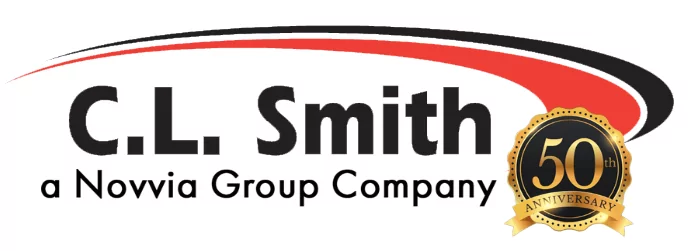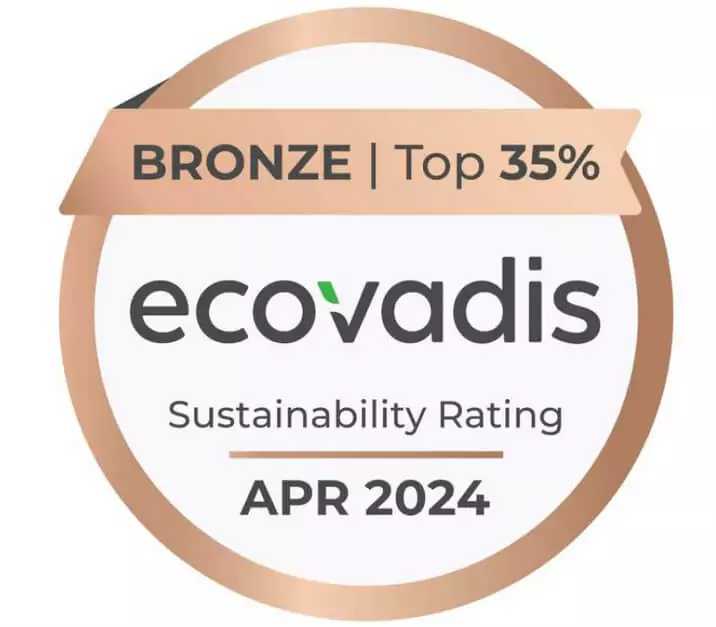Comprehensive Guide to Sourcing UN3480 Lithium Ion Batteries for Global Buyers
In today's rapidly evolving technological landscape, the demand for UN3480 lithium ion batteries continues to surge, driven by their critical roles in powering a myriad of devices, from smartphones to electric vehicles. Sourcing these batteries can be a daunting task for global buyers, involving a complex web of regulations, quality standards, and logistical considerations. This comprehensive guide aims to equip buyers with an essential checklist to navigate the intricacies of sourcing UN3480 lithium ion batteries efficiently and effectively. By providing insights into safety standards, supplier evaluation, and transportation guidelines, we empower businesses to make informed decisions, ensuring they obtain high-quality products while adhering to international shipping regulations. As we delve into the specifics, this guide will serve as a vital resource for anyone looking to strengthen their supply chain with reliable lithium ion battery solutions.

Understanding UN3480 Lithium Ion Batteries: Definition and Classification
 UN3480 lithium-ion batteries are classified as dangerous goods due to their potential hazards in transportation. These batteries are defined as lithium-ion batteries that are not contained in or packed with equipment. Understanding this classification is crucial for global buyers sourcing these batteries, as it directly affects how they are packaged, labeled, and transported. Buyers need to be aware of international regulations, such as those set forth by the International Air Transport Association (IATA) and the International Maritime Organization (IMO), which outline the safe transportation of these batteries.
UN3480 lithium-ion batteries are classified as dangerous goods due to their potential hazards in transportation. These batteries are defined as lithium-ion batteries that are not contained in or packed with equipment. Understanding this classification is crucial for global buyers sourcing these batteries, as it directly affects how they are packaged, labeled, and transported. Buyers need to be aware of international regulations, such as those set forth by the International Air Transport Association (IATA) and the International Maritime Organization (IMO), which outline the safe transportation of these batteries.
Tip: Always check the local regulations and guidelines before sourcing UN3480 batteries. Different countries may have specific requirements regarding packaging, labeling, and documentation that must be adhered to in order to avoid delays or penalties during transit.
When sourcing UN3480 lithium-ion batteries, it’s important to select suppliers who comply with safety standards and have experience in handling hazardous materials. Look for suppliers who can provide material safety data sheets (MSDS) and are familiar with the intricacies of shipping these batteries internationally. This ensures that you are working with a reliable partner who prioritizes safety and compliance.
Tip: Consider conducting rigorous due diligence on potential suppliers. Request references or case studies that demonstrate their competency in handling UN3480 batteries effectively.
Key Benefits of Sourcing UN3480 Lithium Ion Batteries for Global Buyers
Sourcing UN3480 lithium-ion batteries offers global buyers numerous advantages, particularly in the context of an increasingly electrified world. As industries pivot towards sustainable solutions, lithium-ion batteries play a vital role in powering electric vehicles (EVs) and storing renewable energy from solar and wind sources. According to the International Energy Agency (IEA), the demand for lithium-ion batteries is projected to grow by over 40% annually through the end of the decade, underscoring the importance of securing reliable sourcing channels.
One of the key benefits of sourcing UN3480 lithium-ion batteries is their compliance with international shipping regulations, which facilitates their transport across borders. This compliance not only ensures safety but also enhances supply chain reliability in a competitive market. Additionally, the lithium-ion battery market is expected to reach a valuation of approximately $100 billion by 2025, driven by the rise in clean energy technologies. Buyers who engage in strategic sourcing can tap into this growing market potential, ensuring they remain at the forefront of advancements in energy storage solutions.
Furthermore, sourcing these batteries allows businesses to align with global trends towards decarbonization and sustainability. With lithium being a critical mineral for green technologies, procuring UN3480 lithium-ion batteries not only supports corporate sustainability initiatives but also positions companies as responsible players in the global energy transition. As the world moves towards a greener future, the importance of strategic sourcing for lithium-ion batteries cannot be overstated.
Comprehensive Guide to Sourcing UN3480 Lithium Ion Batteries for Global Buyers - Key Benefits of Sourcing UN3480 Lithium Ion Batteries for Global Buyers
| Aspect |
Details |
| Safety Standards |
Meets international safety regulations (UN3480 classification). |
| Sourcing Regions |
Main sources include Asia, Europe, and North America. |
| Cost Efficiency |
Economies of scale can lower prices for bulk purchases. |
| Shipping Considerations |
Requires specialized shipping due to hazardous materials classification. |
| Battery Lifespan |
Typically ranges from 2 to 10 years depending on usage. |
| Environmental Impact |
Recyclable materials and potential for lower emissions than alternatives. |
| Regulatory Compliance |
Must comply with local regulations on importing and handling hazardous materials. |
Regulatory Compliance: Ensuring Safe Transportation of Lithium Ion Batteries
When sourcing UN3480 lithium-ion batteries, regulatory compliance is a critical factor that global buyers must prioritize to ensure safe transportation. According to a report by the International Air Transport Association (IATA), lithium batteries are classified as dangerous goods due to their potential risks, which include overheating and ignition. As of 2023, approximately 80% of all lithium battery transport incidents are attributed to improper packaging and labeling practices. Adhering to the guidelines set forth by the IATA and the International Civil Aviation Organization (ICAO) is essential for mitigating such risks.
Compliance with the UN Model Regulations is crucial in the transportation of lithium-ion batteries. The United Nations Committee of Experts on the Transport of Dangerous Goods emphasizes stringent packaging standards, including the use of flame-resistant containers and clear labeling. Additionally, according to a study by the U.S. Department of Transportation, non-compliance can lead to fines exceeding $1 million and significant delays in shipping. By implementing the recommended safety measures, companies not only protect their shipments but also enhance their reputation as responsible stakeholders within the industry, ultimately contributing to safer global trade practices.
Cost Considerations: Evaluating the Financial Advantages of Lithium Ion Batteries
 Lithium-ion batteries, identified by UN3480, are becoming increasingly popular among global buyers for their efficiency and performance. One of the primary factors driving this trend is the cost advantages they offer compared to traditional power sources. When evaluating the financial aspects, it’s essential to consider not only the purchase price but also the long-term savings they can provide, such as reduced maintenance and lower energy costs. Their high energy density ensures that they deliver more power while taking up less space, making them an economically wise choice for various applications.
Lithium-ion batteries, identified by UN3480, are becoming increasingly popular among global buyers for their efficiency and performance. One of the primary factors driving this trend is the cost advantages they offer compared to traditional power sources. When evaluating the financial aspects, it’s essential to consider not only the purchase price but also the long-term savings they can provide, such as reduced maintenance and lower energy costs. Their high energy density ensures that they deliver more power while taking up less space, making them an economically wise choice for various applications.
Tip: Before purchasing lithium-ion batteries, it's advisable to conduct a thorough market analysis to compare supplier prices and warranty options. This can reveal significant savings and help in negotiating better terms.
Another financial consideration is the recycling aspect of lithium-ion batteries. Manufacturers are increasingly adopting sustainable practices, reducing disposal costs and potential environmental liabilities. By sourcing batteries that offer recycling programs, buyers can further enhance their cost savings while contributing to a greener planet.
Tip: Invest time in understanding the life cycle of lithium-ion batteries, including their resale value and disposal options, as this knowledge can play a crucial role in overall cost evaluation.
Market Trends: Navigating Global Demands for Lithium Ion Battery Sourcing
The global demand for lithium-ion batteries is surging, driven primarily by the rapid growth in electric vehicle markets. As transportation sectors worldwide commit to decarbonization, projections indicate that the market for critical battery materials will triple in value, exhibiting a compound annual growth rate (CAGR) of 10.6% between 2025 and 2035. This burgeoning demand underscores the importance of strategically sourcing lithium-ion batteries to meet future needs effectively.
Moreover, sustainability challenges are becoming increasingly prevalent throughout the electric vehicle battery value chain. Research suggests that the energy consumption involved in producing lithium-ion batteries is expected to escalate, primarily due to the rising demand for electric vehicles. To address these challenges, battery recycling is emerging as a vital component of the supply chain, with significant developments aimed at creating resilient and circular systems.
The lithium-ion battery recycling market is poised for growth, as it aims to mitigate resource shortages and environmental impacts while supporting the expansive requirements of the electric vehicle industry. Overall, navigating these trends will be crucial for global buyers aiming to secure sustainable sources of lithium-ion batteries.




 Lithium-ion batteries, identified by UN3480, are becoming increasingly popular among global buyers for their efficiency and performance. One of the primary factors driving this trend is the cost advantages they offer compared to traditional power sources. When evaluating the financial aspects, it’s essential to consider not only the purchase price but also the long-term savings they can provide, such as reduced maintenance and lower energy costs. Their high energy density ensures that they deliver more power while taking up less space, making them an economically wise choice for various applications.
Lithium-ion batteries, identified by UN3480, are becoming increasingly popular among global buyers for their efficiency and performance. One of the primary factors driving this trend is the cost advantages they offer compared to traditional power sources. When evaluating the financial aspects, it’s essential to consider not only the purchase price but also the long-term savings they can provide, such as reduced maintenance and lower energy costs. Their high energy density ensures that they deliver more power while taking up less space, making them an economically wise choice for various applications.








